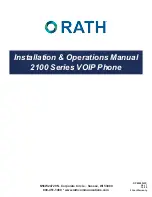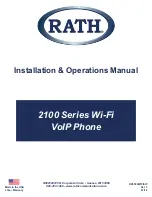
microwave, or dryer, because this may damage the mobile device and could cause a fire or explosion.
Do not use the mobile device with a wet hand. Doing so may cause an electric shock to you or damage
to the mobile device.
Extreme heat or cold
Avoid temperatures below 0°C / 32°F or above 45°C / 113°F.
Microwaves
Do not try to dry your mobile device in a microwave oven. Doing so may cause a fire or explosion.
Dust and dirt
Do not expose your mobile device to dust, dirt, or sand.
Cleaning solutions
Do not use harsh chemicals, cleaning solvents, or strong detergents to clean the mobile device. Wipe
it with a soft cloth slightly dampened in a mild soap-and-water solution.
Shock or vibration
Do not drop, knock, or shake the mobile device. Rough handling can break internal circuit boards.
Paint
Do not paint the mobile device. Paint can clog the device’s moving parts or ventilation openings and
prevent proper operation.
Responsible Listening
Caution! Avoid potential hearing loss.
Damage to hearing occurs when a person is exposed to loud sounds over time. The risk of hearing
loss increases as sound is played louder and for longer durations. Prolonged exposure to loud sounds
(including music) is the most common cause of preventable hearing loss. Some scientific research
suggests that using portable audio devices, such as portable music players and cell phones, at high
volume settings for long durations may lead to permanent noise-induced hearing loss.
This includes the use of headphones (including headsets, earbuds, and Bluetooth
®
or other wireless
devices). Exposure to very loud sound has also been associated in some studies with tinnitus (a ringing
in the ear), hypersensitivity to sound, and distorted hearing. Individual susceptibility to noise-induced
hearing loss and potential hearing problem varies.
Additionally, the amount of sound produced by a portable audio device varies depending on the
nature of the sound, the device settings, and the headphones that are used. As a result, there is no
single volume setting that is appropriate for everyone or for every combination of sound, settings,
and equipment.
You should follow some common sense recommendations when using any portable audio device:
• Always turn the volume down before plugging the earphones into an audio source.
• Set the volume in a quiet environment and select the lowest volume at which you can
hear adequately.
• Be aware that you can adapt to higher volume settings over time, not realizing that the higher
volume may be harmful to your hearing.
• When using headphones, turn the volume down if you cannot hear the people speaking near you
or if the person sitting next to you can hear what you are listening to.
• Do not turn the volume up to block out noisy surroundings. If you choose to listen to your portable
device in a noisy environment, use noise-cancelling headphones to block out background
environmental noise. By blocking background environment noise, noise cancelling headphones
should allow you to hear the music at lower volumes than when using earbuds.
• Limit the amount of time you listen. As the volume increases, less time is required before you
hearing could be affected.
• Avoid using headphones after exposure to extremely loud noises, such as rock concerts, that might
cause temporary hearing loss. Temporary hearing loss might cause unsafe volumes to
sound normal.
• Do not listen at any volume that causes you discomfort. If you experience ringing in your ears, hear
muffled speech, or experience any temporary hearing difficulty after listening to your portable audio
device, discontinue use and consult your doctor.
You can obtain additional information on this subject from the following sources:
American Academy of Audiology
11730 Plaza American Drive, Suite 300
Reston, VA 20190
Voice: (800) 222-2336
Email: [email protected]
Internet: http://www.audiology.org/Pages/default.aspx
National Institute on Deafness and Other Communication Disorders
National Institutes of Health
31 Center Drive, MSC 2320
Bethesda, MD 20892-2320
Email: [email protected]
Internet: http://www.nidcd.nih.gov/
National Institute for Occupational Safety and Health (NIOSH)
395 E Street, S.W., Suite 9200
Patriots Plaza Building
Washington, DC 20201
Voice: 1-800-35-NIOSH (1-800-356-4674)
1-800-CDC-INFO (1-800-232-4636)
Outside the U.S. 513-533-8328
Email: [email protected]
Internet: http://www.cdc.gov/niosh/topics/noise/default.html
1-888-232-6348 TTY
Operating Environment
Remember to follow any special regulations in force in any area, and always switch your mobile device
off whenever it is forbidden to use it, or when it may cause interference or danger. When connecting the
mobile device or any accessory to another device, read its user’s guide for detailed safety instructions.
Do not connect incompatible products.






































